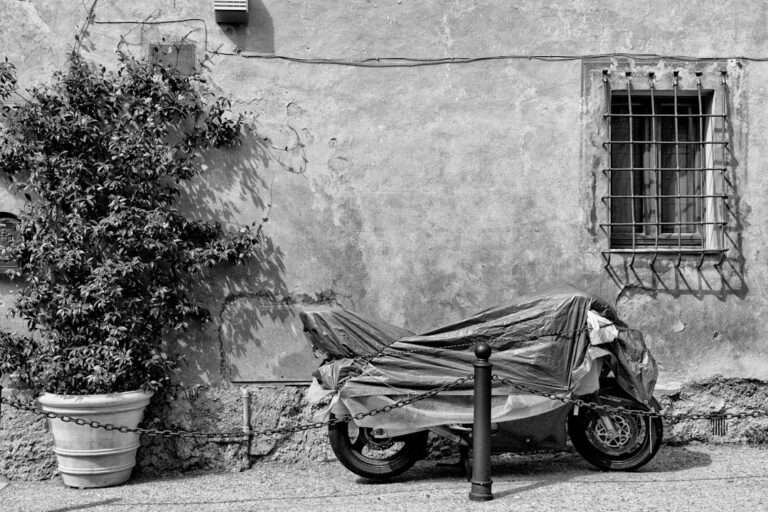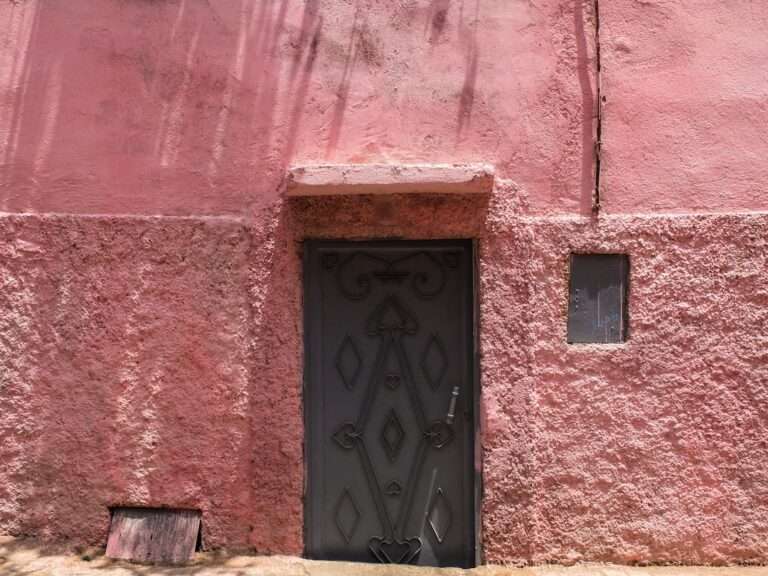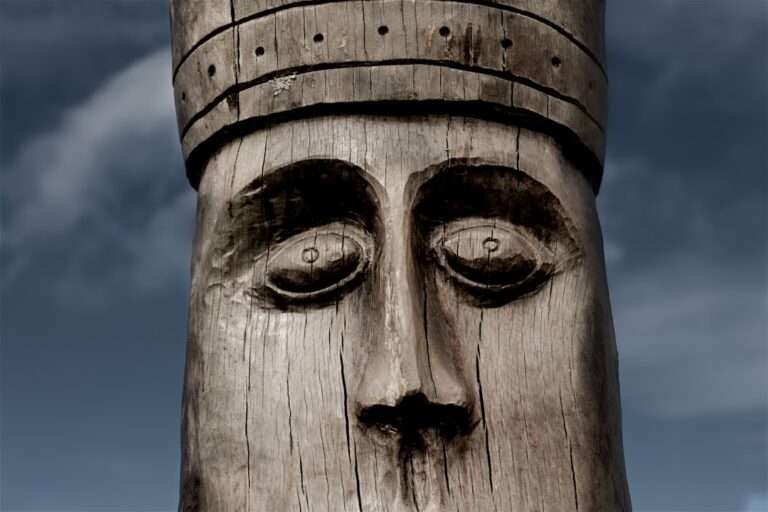How do different cultures interpret the Tree of Life symbol?

The Tree of Life is a widespread and ancient symbol found in cultures worldwide. It represents the interconnectedness of all life, the cycle of existence, and the connection between earth and sky. Typically depicted as a large tree with branches reaching upward and roots extending deep into the ground, it symbolizes the link between heaven, earth, and the underworld.
This symbol is commonly associated with concepts such as wisdom, strength, and growth, and is believed by some to bring positive energy. Various religious, spiritual, and philosophical traditions have utilized the Tree of Life as a symbol of creation, abundance, and the interdependence of all living things. It serves as a representation of life’s cyclical nature and the importance of environmental stewardship.
The Tree of Life embodies the concept that all living beings are interconnected and mutually dependent for survival, encouraging harmony with nature and fellow beings. This symbol has been employed in art, literature, and mythology to convey profound spiritual and philosophical ideas, and continues to resonate with people globally in modern times.
Key Takeaways
- The Tree of Life symbol is a powerful and ancient representation of interconnectedness and the cycle of life.
- In Eastern cultures, the Tree of Life is often associated with enlightenment, wisdom, and the interconnectedness of all living beings.
- In Western cultures, the Tree of Life is commonly linked to knowledge, immortality, and the connection between heaven and earth.
- In African cultures, the Tree of Life symbolizes strength, growth, and the importance of community and family.
- In Native American cultures, the Tree of Life represents the interconnectedness of all living things and the balance of nature.
- In Celtic cultures, the Tree of Life is a symbol of rebirth, renewal, and the interconnectedness of all life.
- The Tree of Life symbol holds universal significance across cultures, representing the interconnectedness of all living beings and the cycle of life.
The Tree of Life in Eastern cultures
The Kalpavriksha in Hinduism
In Hinduism, the Tree of Life is known as the Kalpavriksha or the “wish-fulfilling tree,” believed to grant wishes and fulfill desires. This divine tree is often depicted in Hindu art and mythology as a provider of nourishment and sustenance to all living beings.
The Bodhi Tree in Buddhism
In Buddhism, the Bodhi tree is revered as the tree under which Siddhartha Gautama, the Buddha, attained enlightenment. The Bodhi tree symbolizes spiritual awakening, knowledge, and the path to liberation from suffering.
The Tree of Immortality in Chinese and Japanese Cultures
In Chinese culture, the Tree of Life is known as the Tree of Immortality or the Peach Tree of Immortality, said to bear fruit that grants immortality to those who consume it. This mythical tree is often depicted in Chinese art and literature as a symbol of longevity, vitality, and eternal life. In Japanese culture, the sacred tree known as Shinboku is revered as a symbol of divine protection and spiritual growth, believed to be inhabited by kami, or divine spirits, that bring blessings and good fortune to those who worship at its base.
The Tree of Life in Western cultures

In Western cultures, the Tree of Life has been a prominent symbol in various religious and mythological traditions. In Christianity, the Tree of Life is mentioned in the Book of Genesis as a tree planted by God in the Garden of Eden, whose fruit grants eternal life. The Tree of Life represents the divine source of nourishment and immortality, and it serves as a reminder of humanity’s connection to God and the natural world.
In Norse mythology, Yggdrasil is the World Tree that connects the nine realms of existence, including Asgard (the realm of the gods) and Midgard (the realm of humans). Yggdrasil symbolizes the interconnectedness of all things and serves as a cosmic axis that links heaven, earth, and the underworld. In Celtic mythology, the Tree of Life is known as Crann Bethadh and is revered as a symbol of rebirth, renewal, and interconnectedness.
The Celts believed that trees were sacred beings that bridged the gap between the physical and spiritual worlds. The Tree of Life was seen as a source of wisdom, strength, and protection, and it was often associated with healing and fertility. In ancient Greek mythology, the Hesperides were nymphs who tended to a garden that contained a sacred apple tree, which bore golden apples that granted immortality.
The Hesperides’ garden was considered a paradise where the Tree of Life flourished, symbolizing eternal youth and vitality.
The Tree of Life in African cultures
In African cultures, the Tree of Life holds deep spiritual significance and is often associated with creation, fertility, and the cycle of life. In many African traditions, the baobab tree is revered as the Tree of Life due to its longevity, resilience, and ability to provide sustenance in harsh environments. The baobab tree is often referred to as the “upside-down tree” because its branches resemble roots reaching into the sky.
This unique appearance has led to various myths and legends about the baobab tree’s connection to the heavens and the underworld. In African mythology, trees are believed to be inhabited by ancestral spirits and are seen as sacred symbols of wisdom and protection. The Tree of Life is often depicted in African art and folklore as a central pillar that connects the physical world with the spiritual realm.
In many African societies, trees are considered sacred spaces where rituals and ceremonies are performed to honor ancestors and seek guidance from the spirit world. The Tree of Life symbolizes the interconnectedness of all living beings and serves as a reminder to live in harmony with nature and with each other.
The Tree of Life in Native American cultures
In Native American cultures, the Tree of Life holds great spiritual significance and is often associated with creation, growth, and interconnectedness. Many Native American tribes revere the cedar tree as a sacred symbol of life, strength, and protection. The cedar tree is believed to possess powerful healing properties and is used in traditional ceremonies to purify the mind, body, and spirit.
In Navajo mythology, the Tree of Life is known as the “Tree That Holds Up The Sky” and is believed to support the heavens above. The Tree of Life is also a central motif in many Native American creation stories, where it is often depicted as a bridge between the physical world and the spiritual realm. In these stories, trees are seen as living beings with their own unique spirits that provide guidance and protection to humans.
The Tree of Life symbolizes the interconnectedness of all living things and serves as a reminder to respect and honor the natural world. Many Native American tribes hold sacred ceremonies and rituals in groves of ancient trees to seek guidance from their ancestors and connect with the spirit world.
The Tree of Life in Celtic cultures

The Spiritual Significance of Trees
In Celtic mythology, trees were believed to be inhabited by powerful spirits known as dryads or tree nymphs who guarded sacred groves. The Celts also believed that trees held great symbolic meaning based on their unique characteristics. For example, oak trees were associated with strength and endurance, while willow trees were associated with intuition and healing.
The Interconnectedness of All Living Things
The Celtic Tree of Life symbolizes the interconnectedness of all living things and serves as a reminder to live in harmony with nature and with each other. This sacred symbol encourages us to respect and appreciate the natural world and our place within it.
Honoring Ancestors and the Spirit World
Trees were often planted at sacred sites such as burial mounds or holy wells to honor ancestors and seek blessings from the spirit world. This practice highlights the importance of respecting and honoring our heritage and the natural world that sustains us.
The universal significance of the Tree of Life symbol
The Tree of Life is a universal symbol that transcends cultural boundaries and holds deep spiritual significance for people around the world. It represents the interconnectedness of all living things, the cycle of life, and our connection to the natural world. Whether it’s depicted as a divine tree granting immortality or as a sacred being bridging the physical and spiritual realms, the Tree of Life serves as a powerful reminder to live in harmony with nature and with each other.
The universal significance of the Tree of Life symbol can be seen in its presence in various religious, spiritual, and mythological traditions across different cultures. From Eastern cultures where it represents spiritual enlightenment and immortality to Western cultures where it symbolizes creation and interconnectedness, the Tree of Life continues to inspire awe and reverence. In African cultures where it represents resilience and connection to ancestral spirits to Native American cultures where it embodies strength and growth, this ancient symbol continues to hold deep meaning for people around the world.
In conclusion, the Tree of Life symbolizes our connection to something greater than ourselves – whether it’s nature, our ancestors, or the divine. It serves as a powerful reminder to respect and honor all living beings while embracing our interconnectedness with the world around us. As we continue to navigate through an ever-changing world, may we find solace in this timeless symbol that has inspired countless generations before us.
FAQs
What is the Tree of Life symbol?
The Tree of Life is a universal symbol found in many spiritual and religious traditions around the world. It represents the interconnectedness of all life and the cycle of life, death, and rebirth.
How do different cultures interpret the Tree of Life symbol?
Different cultures interpret the Tree of Life symbol in various ways. For example, in Christianity, it represents the Garden of Eden and the tree that Adam and Eve ate from. In Norse mythology, it is known as Yggdrasil and is the center of the cosmos. In Celtic culture, it symbolizes the connection between the earth and the heavens.
What are some common themes associated with the Tree of Life symbol?
Some common themes associated with the Tree of Life symbol include growth, strength, wisdom, and the interconnectedness of all living things. It is often seen as a representation of the cycle of life, death, and rebirth.
How is the Tree of Life symbol used in modern culture?
The Tree of Life symbol is often used in modern culture as a decorative motif in art, jewelry, and home decor. It is also used as a symbol of environmentalism and the interconnectedness of all living things. Additionally, it is sometimes used as a spiritual or religious symbol in various practices and beliefs.





